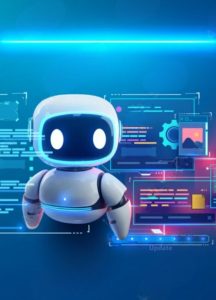Let us first go through some of the basic differences between MVP and Prototype. A prototype is the very initial version of a product that showcases its functional capabilities, user interfaces and design. It validates if an idea or concept has working possibilities. It ultimately helps investors, potential users, designers and all other stakeholders to visualize if the product’s design, appearance and behavior are up to the mark. Although, at the prototyping stages, the product may not be completely functional, it gives a preliminary idea of user experience.
On the other hand, a minimum viable product (MVP) is a mini version of the product itself that is functional in nature. It includes the most important minimal features that are expected to be present in the product for tackling a particular problem. The MVP is tested through thorough user experiences, and their feedback related changes are also incorporated in the MVP. It assists in validating assumptions in the real world obtained from user behavior, providing certain useful decisions based on those feedbacks and iterating similar prongs on the original product through the development team.
Factors for Deciding between MVP and Prototype
The following are a few points on the basis of which one can decide amongst Minimum Viable Product vs Prototype for their Idea or approach:
1. Objective:
Prototyping is largely beneficial if the main objective of the development team is to visualize designing and conceptualizing user interactions. On the other hand, MVPs are better suited if the objective is aligned towards validating assumptions and hypotheses as well as collecting user feedback, especially with respect to functionalities, rather than aesthetics.
2. Complexity:
When it comes to intricate user interactions and complex technical requirements, stakeholders find prototyping useful to understand the proposed solution and invest in full-scale productization. While MVPs showcase the problem and the infused functionalities to overcome these without going in-depth about designing.

3. Resource:
MVPs are resource-intensive in nature as compared to prototypes, given, these require panoptic testing and backend systems functionality. Prototypes can, thus, represent a concise vision of the product, even with comparatively lesser funding as well as time. For example, for developing an MVP, one might need to buy licensed products such as Unity 3D, Figma etc., whereas Prototype may only require a free trial version of AUTOCAD as its development requires less time.
4. Validation:
The validation level is internal, when it comes to a prototype, where discussions are held amongst the stakeholders only, for a better understanding. On the other hand, MVPs, represent a mini functional product and thus, require external user validation and feedback for improvising decisions and adjustments. Based on user behavior.
5. Marketing:
The time-to-market for MVPs is on the higher side due to excessive developmental time. Whereas prototyping can be easily and quickly developed, being visualizing ideation and conceptualization. This results in swift buy-in decisions from the stakeholders as compared to MVPs with respect to marketing.
6. Risk:
The time, cost and material associated with building an MVP is much higher as compared to a prototype. Since prototypes are developed in early stages of productization, one can identify and mitigate associated risks about unclear design and element requirements, prior to investments. In contrast to this, although MVPs mitigate risks at certain levels before the entire product is developed by being subjected to real world user feedback, so as to meet user requirements, the resources utilized are still high.
7. Experience:
As mentioned earlier, MVPs represent a functional product instead of polished user experience, while prototypes demonstrate navigation flows and user interactions. The development team and stakeholders can prioritize between user experience and functional validity for selecting from the alternative.

Proof of Concept as an Alternative
When it comes to Prototype vs MVP vs PoC, one can observe that the Proof of Concept or PoC, is basically a feasibility study involving the viability of available technical resources, tools, capabilities and such. It helps to validate a technical assumption, features as well as functions, and their implementation as envisioned. A PoC usually does not involve user interfaces or security, rather mock APIs, basic UI and hard codings.
It can be easily developed in a few days to weeks as compared to a prototype or an MVP, which may take weeks to months for development. Based on the aforementioned account of differences between Minimum Viable Product vs Prototype, one can choose their validation journey and transform their offerings from corrective project ideation.
How KritiKal Can Help?
KritiKal Solutions can assist you in transforming ideas into market ready products with its MVP development services. With a motto of maximum business value with low investments, it offers end-to-end support from conceptualization stage, product discovery, MVP software development, implementation/deployment, testing, stabilization, right till product development.
Please call us or mail us at sales@kritikalsolutions.com to avail our services.
Conclusion
We can thus conclude by saying that a prototype is an initial version of the product, showcasing its functional capabilities as compared to an MVP that is functional in itself. Depending upon time, cost and resource investments, one can choose between prototype or minimum viable product development, where prototyping is comparatively less complex, risky as well as resource and time-to-market intensive. The former provides visual conceptualizing for the product, while an MVP consists of minimal features which can be improved further based on user feedback and validation.

Mayank Soni holds the position of Technical Architect at KritiKal Solutions. He has a fairly considerable software architecture background, with a vast experience of navigating various complex software systems as well as new gen technologies such as AWS, Azure, DotNet and Node.js. Mayank has been a part of multiple crucial projects and has helped KritiKal steer successfully through them.



 Global
Global  United States
United States 
